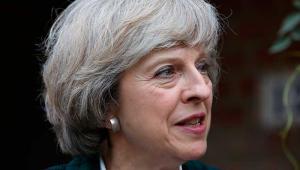Could the Treasury’s power be on the wane? This has become a central question in the aftermath of the Brexit vote, which bequeathed a divided cabinet, party and indeed country.
If we thought the run-up to the referendum was the great Brexit debate in full flow, we now know it was merely the first act. The simple referendum question – “Should the United Kingdom remain a member of the European Union?” – was, in hindsight, either predicated upon a remain vote or should have had subsequent clauses on economic cost and tolerance of immigration. Former prime minister David Cameron did not conduct extensive contingency planning. Subsequently, everyone has been trying to decipher what exactly the result means.
Nowhere is this more keenly felt than in the government itself. The “Brexit means Brexit” holding pattern is now under increasing pressure, with every government update seized upon as a way of seeing through the policy fog. The Treasury is unquestionably at the forefront of charting the future course. It has new leadership since July, politically and officially, with Philip Hammond appointed chancellor while Tom Scholar beat Sir John Kingman to succeed the long-serving Sir Nick Macpherson as permanent secretary.
In his previous role as foreign secretary, Hammond had evolved into a solid remainer. To balance her cabinet, prime minister Theresa May installed four prominent Brexiteers: Boris Johnson, David Davis, Liam Fox and Andrea Leadsom. In mid October, rumours that Hammond might resign after just three months captured headlines, with reports he felt excluded from key decision-making committees, including the 8.30am strategy meeting at No 10 Downing Street, which his predecessor George Osborne had attended.
Osborne and his Treasury were cast as the proponents of Project Fear – the defeated uber-naysayers spreading Brexit doom – and his shadow looms large. The Treasury is now seen as the main “soft Brexit” supporter in government.
The historical context to any loss of Treasury influence largely concerns the years after 1997. Paradoxically, the Tony Blair-Gordon Brown relationship saw a near breakdown at a time when the Treasury’s writ ran across Whitehall like never before.
Then came the Cameron-Osborne partnership – it was said you could not place a cigarette paper between them, and Osborne influenced policy in a Brown-esque way he had pledged not to.
Going further back, many see the splitting of the Treasury in 1964 and the creation of the Department of Economic Affairs as the nadir of Treasury power. With “creative tension” between Jim Callaghan and George Brown, the DEA burned brightly for a year before the government placed financial responsibility before economic growth. It was abolished in 1969.
But the real low point in modern times came during the Edward Heath years. A relatively weak chancellor, Anthony Barber, was brushed aside by a prime minister who appointed the head of the civil service, Sir William Armstrong, to coordinate the economic U-turn that marked that administration.
Moreover, the world wars saw the Treasury cast aside as financial probity was simply less important than winning. Not for nothing did the super-ambitious David Lloyd George give up the chancellorship to become minister for munitions en route to No 10.
Today, while the chancellor is not in as strong a position as recent predecessors, neither is the prime minister. The deep divisions within the country are represented in the cabinet. The Treasury will continue to provide the backbone of realistic, pragmatic policymaking. Hammond is standing his ground. The Treasury’s influence is inescapable.




















